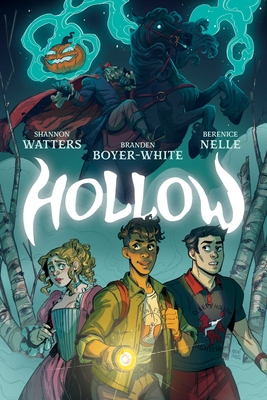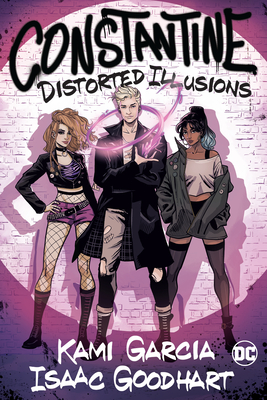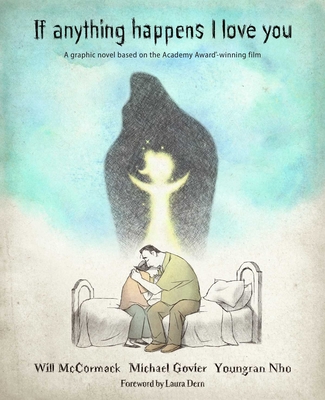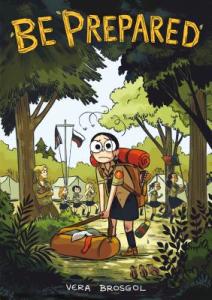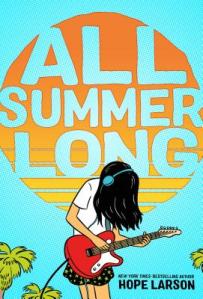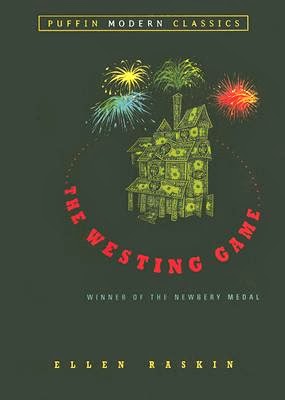Hollow
by Shannon Watters, Branden Boyer-White, and Berenice Nelle
Support your local independent bookstore: buy it there!
Content: There are some scary moments with a ghost. It’s in the Graphic Novel section of the bookstore.
Izzy Crane has recently moved to Sleepy Hollow from San Francisco and she’s getting used to the whole small-town feel of things. She’s kind of made friends with Croc, the class prankster, and she has a crush on Vickie Van Tassell, whose family has a Legacy in this town (and who is not supposed to be doing anything with someone whose last name is Crane!). Then a mysterious substitute shows up at school, and Vicky and Izzy realize that Vicky’s life is in danger due to a centuries-old curse on the family). It’s up to the three high schoolers (with the help of the Headless Horseman) to thwart the curse and save Vicky’s life.
I’m a complete sucker for riffs on classic literature, and this is a smart retelling. I liked Izy’s relationship with both Croc and Vicky and the way they worked together. I liked the Headless Horesmeent, and the knowledge the book had that it was playing on the classic story. It was smart, it was fun, and I loved reading it.
Welcome to St. Hell: My Trans Teen Misadventure
by Lewis Hancox
Support your local independent bookstore: buy it there!
Content: There is teen drinking, and some nudity as Hancox tries to describe his gender dysphoria. It’s in the Graphic Novel section of the bookstore.
In this graphic memoir, Hancox chronicles his teen years and growing up in a small English community, which they affectionately (or not) dub “St. Hell”. It’s not pleasant growing up: Hancox suffers from intense gender dysphoria and is struggling with his body. He tries everything – from being anorexic to power-lifting – to get rid of what he finds disgusting: his body. As he navigates this, he has friends and family who, while more supportive than not, often make missteps. But then, it was the early 2000s, and no one really knew what they were doing.
The thing I liked best about this memoir was that Hancox inserted himself into the story as well. His present self would go back and interact with characters in the story, from his past self to his parents and friends. He assures his past self that things do eventually turn out, and he asks his parents what they were thinking and why they acted the way they did. it’s not only a good story, it’s a healing one, and not just for the author, I htink. I think – no matter if we are trans or not – we should look at our past selves with compassion; we didn’t alwyas know what was going on and what we were doing, and hindsight is always 20/20. But it’s also a good look into what is ogin on the brain fo someone who is trans, and how (at least for Hancox) that played out.
Crumbs
by Danie Stirling
Support your local independent bookstore: buy it there!
Content: The characters are older – say in their late teens or early 20s, so it might not be too interesting to younger readers. It’s in the Graphic Novel section of the bookstore.
Ray is a witch, who has her sights on being a Council member. She’s gone to school, and she’s passed her examination to be n intern. Laurie is kind of aimless: he works at his aunt’s bakery, and is trying to be a musician, but keeps flopping at auditions. When they meet, there is an intstant attraction. As they start their relationship, they discover that having magic doesn’t really make relationships easier. They go through the ups and downs of establishing a relationship and communication and balancing that with their own interests and careers.
This was a very sweet graphic novel. I liked the magic system (the cell phones were really cool) ad I liked what Stirling created. I liked the way Ray and Laurie developed their relationship, and how it resolved in the end. It was charming and sweet and cute and fun, all those cozy words. There’s nothing deep here (though it is a good representation of a healthy relationship), but it was delightful to read.
Constantine: Distorted Illusions
by Kami Garcia, illustrated by Isaac Goodhart
Support your local independent bookstore: buy it there!
Content: There is underage drinking and demons. It’s in the Graphic Novel section of the bookstore.
John Constantine has grown up in London, and his stepfather wants him to go to America and study under a magic master. John wants no such thing, but he does want to get out on his own. So he lies to his parents, heads to Washington, DC to live with a friend of his, and joins a band. He does meet with the magic master and it goes more than badly. But John steals a magic book and he and his friends start dabbling. They unwittingly summon a Greater Deamon which takes possession of Constantine’s friend and creates havoc.
I don’t have much of an attachment to the character of Constantine; I only vaguely know him through Sandman (only the TV show, really), and so I have no idea what Garcia is trying to do with this character. The story wasn’t terrible, but it wasn’t really engaging either (there are only so many bad-boy stories you can read). I liked that Constantine’s stepfather was the real parent, being there for his stepson in ways that Constantine’s father wasn’t. I also appreciated that Constatine had a definite growth arc.
I think that those who are interested in the character would be more into this one than I was.
If Anything Happens I Love You
by Will McCormack, Michael Govier, Youngran Nho
Support your local independent bookstore: buy it there!
Content: It deals with grief and the trauma of a school shooting. It’s in the Graphic Novel section of the bookstore.
An unnamed girl is dead and worrying about her parents’ grief. Her parents have been stuck since the moment they found out she was killed in a school shooting. But, through the magic of – something? – she is able to reconnect with them and remind them of the good things in her/their life before she was so brutally taken away.
I have no idea who this book is for. On the one hand, it shows the absolute grief of parents having their kids untimely taken away from them. It’s a horrible thing, and one I wish we could figure out how to address in this country. But, is it for kids? The girl is 12, but she’s not really a protagonist. Is it for parents who are grieving? Is it for kids who are in school, having to deal with lockdowns and shooter drills? is it to just raise awareness? Also: it’s not really a graphic novel, but more like a picture book for older kids/adults. It wasn’t a bad book, I just have no idea who it’s for.

